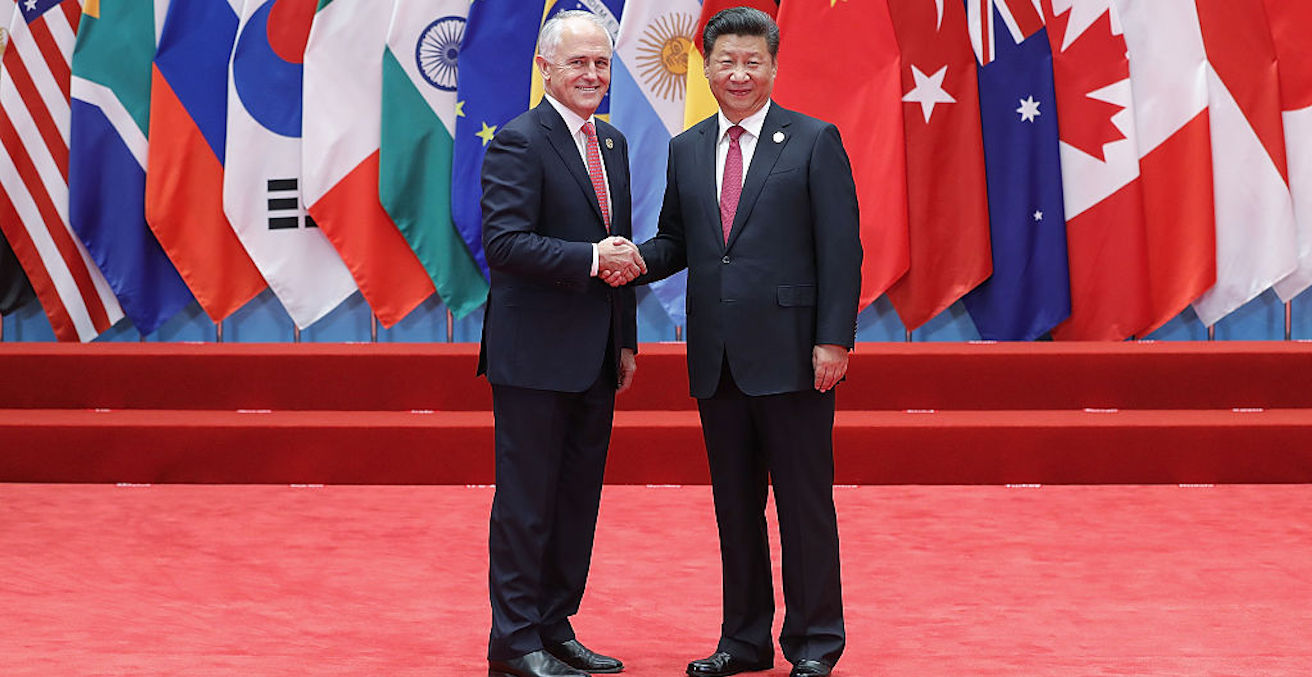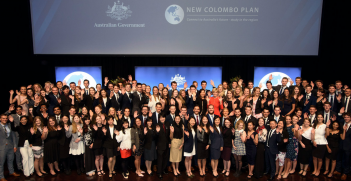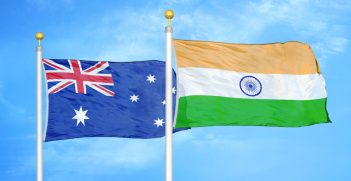Australia and China: Understanding the Reality Check

The recalibration of Australia-China relations is instructive for other countries seeking to respond to the more assertive and coercive elements of Chinese foreign policy.
Australia’s relations with the People’s Republic of China (PRC) have gone through a reality check over the past two years. In response to national controversies over foreign influence and interference, the Australian Government has fashioned some robust policy responses, notably via legislation enacted in June 2018. The reforms modernised and strengthened penalties for existing espionage, sabotage and related offences, created new offences targeting foreign interference and economic espionage, and established a register for foreign political agents. This difficult phase has created conditions for a new normal in relations with China, in which economic opportunity is balanced with a heightened awareness of risk.
The new laws identify three characteristics of foreign interference: covert, coercive or corrupting behaviour. It also characterises four pillars to an effective policy response: transparency (“sunlight”) along with enforcement, deterrence and capability. These are guideposts for other countries in a world where countering foreign interference is emerging as a security priority.
What does China want with Australia? Four objectives
Making sense of Australia’s reality check on China requires an understanding of what China wants. It is reasonable to read at least four broad objectives, beyond sustaining the obvious mutual benefits of economic relations.
First, Australia is a key US ally. The PRC would like to weaken the alliance. Second, Australia has military, intelligence and capability secrets and technologies that the PRC seeks. Third, Australia is an outspoken and independent power in the Indo-Pacific, whose criticism and solidarity-building resistance to Chinese power is noted and potentially followed by others. Fourth, Australia is home to large communities of Chinese heritage which Beijing wishes to see as largely pro-PRC in their attitudes, or otherwise silent and passive on matters relating to the interests of the Chinese Communist Party. Here Australia is a bellwether. If dissenting Chinese voices can be silenced in Australia, they can be silenced anywhere.
What next?
The next phase will involve rebalancing the diplomatic message, moving relations forward under the conditions of the new normal that has been established. Significantly, in September 2018, the PRC signalled to Australia a willingness to moderate its own rhetoric. A credible interpretation is that, amid trade confrontation with the United States, China is realising it cannot afford to alienate many countries at the same time
Challenges remain. A key objective for the Australian Government should be to convey reassurance – a continued modulation of the debate as signalled by then Prime Minister Turnbull’s August 2018 speech – but without retreating from the hard-won national security gains that have been made. There should be reassurance to the PRC in terms of emphasising that what Australia wants is a relationship of mutual respect. There will be future phases of tension, including in the aftermath of the Huawei decision and with other investment decisions looming. New difficulties are on the horizon in Australia’s neighbourhood. Canberra will need consistency and discipline in policy and the way it is signalled.
Domestically, there needs to be sustained outreach to Chinese Australian communities, and reassurance that the legislation is not targeted at them. Indeed, it is partly for these communities’ protection in an Australia where the rights of all are safeguarded equally from foreign interference. In time, questions will also arise of potential prosecutions under the new laws, and how those may be handled. Security agencies should act only when extremely confident of the case they can make. It may be that the laws achieve their effects overwhelmingly through deterrence and that prosecutions do not eventuate.
The government will also need to improve its outreach beyond Canberra, to bridge a glaring gap in perceptions of the problem and its solution. If Australia is serious about building its own united front to protect national interests, then it needs genuine consultative mechanisms for the sharing of trusted, even classified, security information and assessments with business CEOs and the leaders of state and territory governments. Otherwise, it is likely those key stakeholders will continue to experience and amplify a certain amount of bewilderment and resentment at aspects of national policy on China, rather than the solidarity that an effective policy requires. Separately, the outcomes of a number of legal cases, namely the defamation actions against Australian media, may have some bearing on wider perceptions about the foreign influence and interference issue, as well as perceptions about defamation laws and the purposes to which they are put. Additionally, there is the important unfinished business of legislating a ban on foreign political donations: this is the missing third pillar of the government’s influence and interference laws. Another pending challenge is about how to avoid helping the PRC gain a security advantage in vital emerging technologies like quantum computing and artificial intelligence. How can Australia minimise this genuine risk in its universities, without collateral harm to legitimate international research collaborations?
Australia and the United States will need to closely monitor each other’s fast-evolving debates and policy responses on these issues, not least because of the deep connections between their own university research sectors. Australia should maintain a distinction between its sovereign pushback against PRC interference and the more comprehensive US–China strategic competition that is developing. Having initially sounded the alarm on PRC interference, Australia is now well-placed to advise its US friends on moderating their public debate, so that the US response cannot be dismissed as crude and counterproductive McCarthyism.
In closing, it is worth returning to Malcolm Turnbull’s remarks of December 2017, in introducing Australia’s foreign interference laws. Turnbull will be recognised in time for his leadership, however initially reluctant, in changing the way Australia engages with China, in the direction of sovereignty, security and self-respect, a prerequisite of mutual respect. Turnbull was criticised for his rhetorical excess when, in characterising the laws as an example of Australian people standing up for their sovereignty, he alluded to Mao’s remark in 1949 that the Chinese people had “stood up”. Turnbull did not need to say that, or repeat it the next day in rather imperfect Mandarin. It was a pity, those words overshadowed the preceding and far more important line in what was a significant speech, replete with context and worth reading in full: “Our relationship with China is far too important to put at risk by failing to clearly set the terms of healthy and sustainable engagement.”
This is what Australia’s China reality check has primarily been about. In time, it will be good for Australia’s relations with China, as well as more generally for Australia’s interests.
Professor Rory Medcalf is Head of the National Security College at The Australian National University.
This article is an extract from Rory Medcalf’s article in the Australian Journal of International Affairs titled ‘Australia And China: understanding the reality check’. It is republished with permission.





